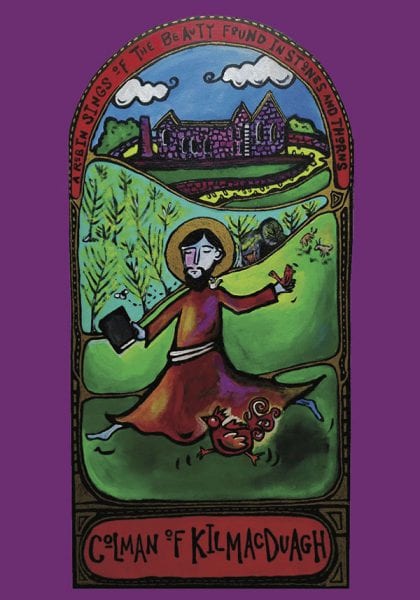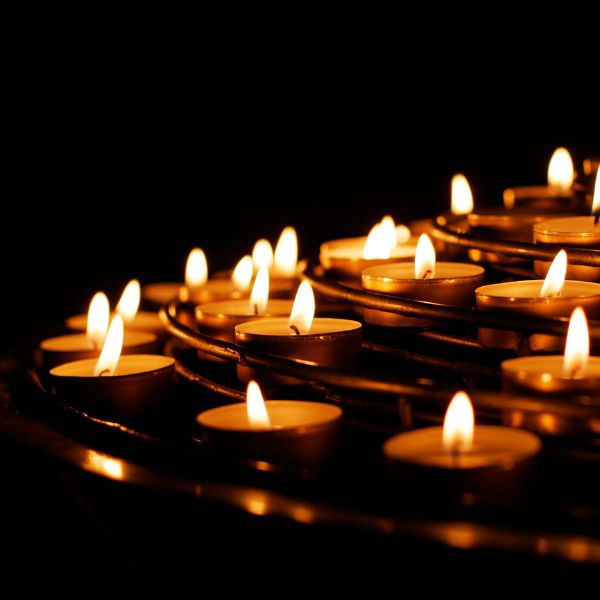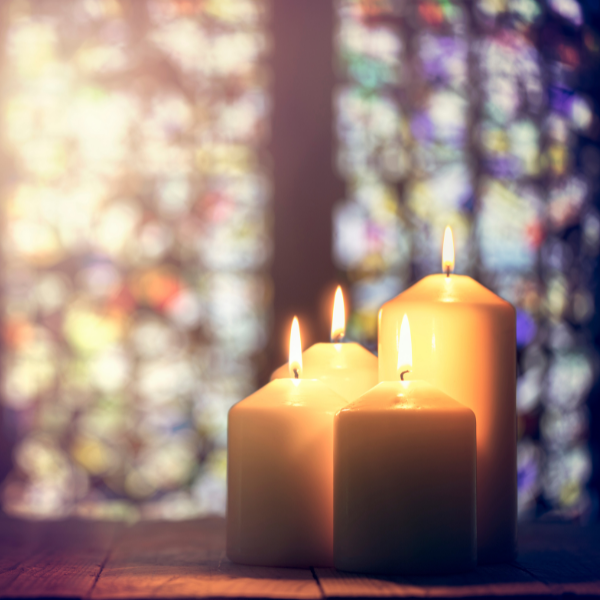“Whose silence are you?”
After Thomas Merton
The single eye of the sun long shut,
world deep asleep like a sunken ship loaded with treasures,
full moon’s fierce shadows illumine the way for miles,
stars glint like coins dropped to the well’s black bottom,
last apple fallen from the tree
in a slush of honey and crimson.
I walk barefoot across wet grass,
night’s questions relentlessly wrestling
in my mind’s knotted weave.
I look for answers written by salmon in the stream,
or a snail’s slither of streaming silver.
I prostrate myself at the gnarled foot of the ash tree.
River softly murmurs her secrets.
Then the wind departs, taking words with it.
Hush cracks open, and
only Silence
blankets my moss-covered dreams
under the mute howl of night.
The long slow leaving of voices reveals
the ancient song of repose.
I awaken covered with dew,
stillness shaken by a single robin.
No longer full of my own echoing emptiness,
I am able to hear at last.
—Christine Valters Paintner
Dearest monks, artists, and pilgrims,
December 10th is the feast day of Thomas Merton. Merton was a Trappist monk living in the 20th century and was instrumental in bringing the contemplative life and wisdom teachings to a wider audience through his writings.
Here is a brief excerpt from my forthcoming book Illuminating the Way: Embracing the Wisdom of Monks and Mystics (being published in April 2016 by Ave Maria Press) on the invitation to embrace your inner monk:
Archetype of the Monk
The root of the word monk is monachos which means single, as in singular of focus, or single-hearted. The monk seeks to discover the divine presence in everything, every moment, every person. This is, of course, a lifelong practice and is never “perfected.”
The Monk seeks wisdom, knowing this comes through showing up to the struggles of the inner life. Stability and a commitment to staying with our experience is at the core of the monk. There is a commitment to presence to the moment and not running away, whether physically or emotionally. The monk knows that staying with discomfort yields grace and growing freedom.
Connected to this is hospitality and welcoming in the stranger. Monasteries have traditionally been sought out as places of refuge and sanctuary. In medieval Ireland, this was literally true as the laws of the kingdoms did not apply within the monastic complex. So the Monk invites us to let in all that is strange, both within and without, and welcome it as a divine guide.
The Monk treasures reflection and time spent in solitude and silence, knowing that in this time, rich connection to the inner life is fostered and then spills over into connection with the world. In some monastic traditions, there was greater emphasis on the hermit, who retreated out to the wilderness and was then sought out by those desiring wisdom. Other traditions emphasized the communal nature of the monastery, and the support needed for the rigor of this life commitment. In Celtic traditions, a monk was expected to have an anam cara, or soul friend, with whom they could reveal all the struggles of the soul. Often it takes someone quite mature in their spiritual practice to be able to live a hermit life free of the wrestling with one’s shadows.
The Monk also relishes the gift that practice brings. There is a discipline in the monastic life, of committing oneself to prayer practices which help to remind us of the divine indwelling in each moment, and within us. These practices also support us in shedding our false identities and continually return to the indwelling spark that is our divine nature.
May your own monk be inspired by slowness and attentiveness in the world.
With great and growing love,
Christine
Christine Valters Paintner, PhD, REACE
Photo: © Thomas Merton Dancing Monk Icon by Marcy Hall






3 Responses
This is a beautiful reflection on an incredible experience you had Packs Dixon. We do not often get a chance to really get to know our wild coinhabitors of our earth. We have owls that so often are in what seems to be our neighbors trees that call to each otheer often deep in the night. I have tried to select where the sound is coming from but have never been able to actually see them. That fact does not distract me from appreciating their hounting sounds here in the suburban landscape west of Chicago, IL.
My word is mercy…
I have lived a life of giving mercy, but not necessarily receiving mercy. It is time to see God with new eyes.
The poem is beautiful, Christine… I “befriended” a solitary spawning wild Coho salmon this past year, in the creek that runs past my home . She lured me down a steep trail, daily, for a few weeks, where I was able to sit with my watercolors, taking in the beauty surrounding me, while waiting for her intermittent surfacing and splashing, as she tended and defended her redd on this small section of creek. I think of her and her progeny, often, as the creek rises and falls due to fluctuations in the weather. Although I have observed thousands of animals in the wild, it is a rare blessing to observe one distinctive being for several days in succession. This salmon had a white tail from all the gravel sculpting and fanning, so she was set apart from the other salmon visitors, male and female, that arrived in her territory. I could see the mergansers and kingfishers leaning in, as her energy waned. An occasional osprey would wing up through the ravine, and I prayed her hiding place in the rapids between two rocks wouldn’t be detected. One day she simply disappeared. I searched among the coves and boulders, but there was no sign of her anywhere that I could detect. That evening, the sun set purple, the color of royalty covered the surface of the creek.